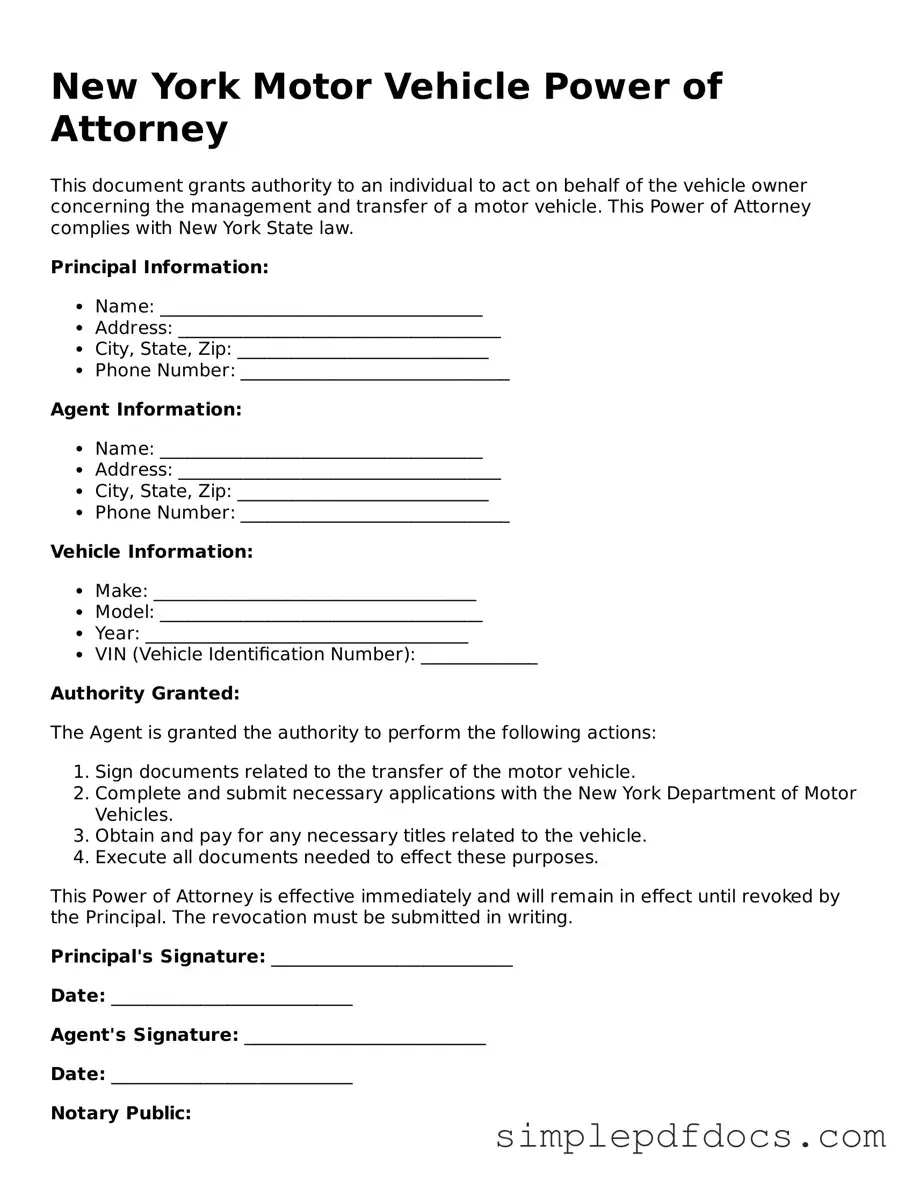The New York Motor Vehicle Power of Attorney form serves as a crucial document for individuals needing to delegate authority regarding their motor vehicle transactions. This form allows a designated agent to act on behalf of the vehicle owner in matters such as registering a vehicle, transferring ownership, or obtaining a duplicate title. By completing this form, vehicle owners can ensure that their interests are represented, even when they are unable to manage these tasks personally. The form requires specific information, including the names of both the principal and the agent, as well as details about the vehicle in question. It is essential to provide accurate information to avoid any potential issues during the transaction process. Furthermore, the form must be signed and dated by the vehicle owner to be legally binding. Understanding the implications of granting such authority is vital, as it empowers another individual to make decisions that may impact the owner's assets and responsibilities. This article will delve into the specifics of the New York Motor Vehicle Power of Attorney form, outlining its purpose, the necessary steps for completion, and the potential benefits of utilizing this legal tool.
